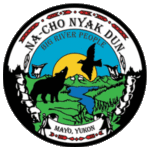Lands and Resources
The Lands and Resources Department’s mandate arises from the First Nation Final and Self Government Agreements of 1993 and subsequent policy development. In 2000 the department developed a mission statement and principles for departmental operations which remain in effect.
Principles of Departmental Operation
– Conservation of natural resources for current and our children’s futures use;
– Striving for sustainable development and use of natural resources (which means balancing social, economic and environmental factors in decisions about conservation and development);
– Integration of Traditional Knowledge with Scientific Knowledge;
– Carrying out integrated land and resources management/co-management (which means that all elements of the ecosystem: physical and biological are considered when planning and management decisions are made);
– Mutually beneficial partnerships and cooperation with other governments, organizations and stakeholders;
– Public, elder and youth participation, and
– Fairness and timely responses to NND citizens, Council and others.
Development Assessment in Our Traditional Territory
https://www.nndfn.com/land-resources/development-assessment-in-our-traditional-territory/
